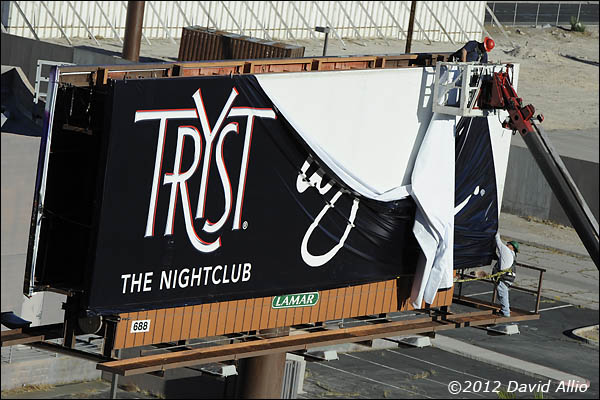In my youth – don’t ask how long ago that was – there were sign painters that traveled the south painting billboards on barn roofs. The advertisements varied from chewing tobacco to tourist attractions. Now, instead of a day-long painting process, billboards are changed in minutes through the use of computer-generated wraps.

Las Vegas Billboard | © 2012 David Allio
This particular billboard attracted my attention because of the stark contrast in the black-and-white graphics. Out of curiosity, I checked a variety of automated exposure modes on my digital camera before setting the exposure model to Manual.
The most common question is why? Why should I go to the trouble of ignoring all of the automation of a modern digital camera?
The answer is that the high contrast of the scene caused the in-camera meter to vary widely between under-exposure and over-exposure. When the camera sensed more black, it tended to indicate less reflected light than average. Conversely when it sensed more white, the tendency would be for under-exposure.
These are common errors. That is why most of my Experience Photography workshops, including the motorsports workshop that starts tomorrow at the Las Vegas Motor Speedway, open with a discussion of common exposure errors and manual exposure calculation.
For reference, this photograph was created using a Nikon D3 camera with a Nikkor AF VR Zoom 70-200mm f/2.8G IF-ED set at 200mm. The Manual exposure data was f/8 at 1/1000th of a second and a film speed of 250 ISO.
You must be logged in to post a comment.